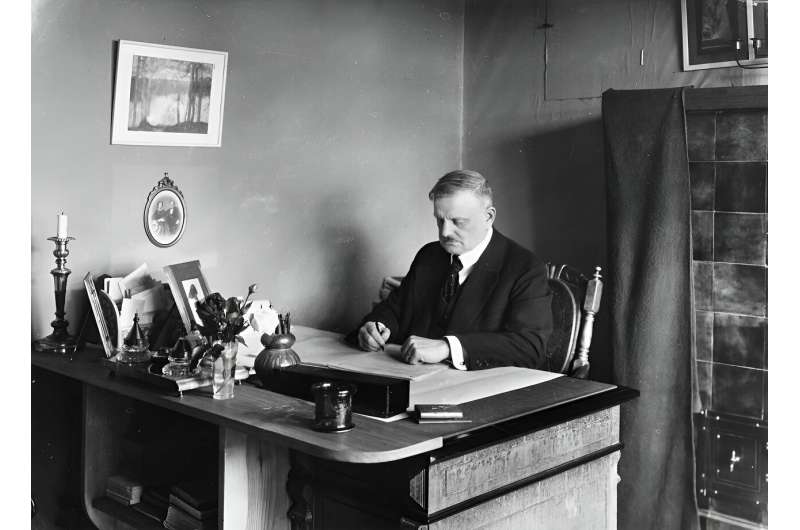Credit: Eric Sundström, Helsinki City Museum
New research highlights how in the 1930s, the relationship between radio and Finland's most famous composer Jean Sibelius had an important effect on the development of broadcast operations as well as on the status of Sibelius and Western classical art music.
Finland's most famous art music composer Jean Sibelius (1865–1957) gradually ceased writing new music at the end of the 1920s. At the same time, radio broadcasts became more common in Europe. In Finland, the key player in the industry was Finnish Broadcast Company Yleisradio, founded in 1926, which gained broadcast monopoly status in 1934.
Thanks to AM technology and coordinated joint concerts, Yleisradio showed that it had something to offer to an international audience as well, says Janne Mäkelä, visiting researcher from the University of the Arts Helsinki.
Sibelius's music, on the other hand, spread effectively around the world and made Sibelius himself a celebrated national hero and an international media figure.
"In previous studies, the 1930s have often been seen as a culturally closed decade in Europe including Finland," says Janne Mäkelä.
According to his research, the decade was also transnational in nature due to the intensive relationship between radio and classical music.
"Sibelius himself was a diligent radio listener and, with the help of AM broadcasts, newspaper program information and personal networks, stayed well informed about foreign radio programs until the 1950s," Mäkelä says.
In the 1950s, the international reach of radio decreased due to the new FM technology.
The central research material of the article consists of Finnish newspapers and magazines and Yleisradio's annual reports. The research literature includes writings about music, radio operations, internationality and Jean Sibelius.
The findings are published in the journal Lähikuva – audiovisuaalisen kulttuurin tieteellinen julkaisu.
More information: Janne Mäkelä, Radio ja Sibelius, Lähikuva – audiovisuaalisen kulttuurin tieteellinen julkaisu (2024). DOI: 10.23994/lk.144520
Provided by University of the Arts Helsinki
























